Tiny House Roofing and Snow Load
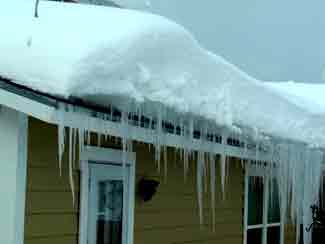
Terrible ice dam and snow load on asphalt roof must be shoveled and removed. Early winter attention and continual maintenance could have averted the roof leaks that occurred.
When the cold winds of late autumn blow in the first snowflakes of the season, we hunker down, break out the board games, and fire up the wood stove. These seasons can go very well for folks who plan ahead for the snow load on their roof, whether it’s before their build or on a winter-to-winter basis. Regardless of your situation, there are ways to mitigate the potential damage to your roof and your home.
These photos show the depth of the snow buildup, but they can’t measure the layer of ice underneath, detect the channels where the melting water flows, or even begin to estimate the crushing weight. A THOW has some distinct issues with snow load because much of the weight of the house is resting on the tires. Certainly more than conventional builds, THOW owners need to vigilant when it comes to snow removal.
Unique THOW Issues
In a severe winter, the snow load can damage tires, axles, and actually bend the trailer. Six inch walls are recommended when framing a tiny house meant for a high snow area. More posts under the trailer will be needed to keep the weight off the wheels.
Shingles
Tiny house builders stay away from asphalt shingles because they retain the snow, causing very heavy snow load. This snow load creates an ice dam at the roof’s edge. Water builds up behind the dam and makes its way under the roofing material into the home, causing serious damage. This problem can be mitigated by shoveling the roof after each storm, and adding heat tape to create channels for the the water runoff.
Metal Roofing
Metal roofing is the preferred method to use for a tiny house build. Not only because it stays on well when towing, but because the snow will slide off when it’s pitched correctly.
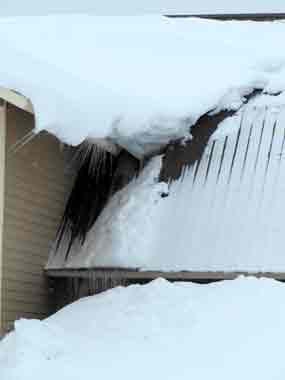
This multi-pitched roof prevents snow from sliding off roof, creating an ice jam. The weight has cracked the ceiling and water damage is already visible. The windows are completely obscured with snow shed piled up to the roof.
Several design aspects need to be thought through for a metal roof to perform properly: minimum pitch, multi-pitched roofs, and the all-important snow shed: where’s all the white stuff going to end up?
Minimum Pitch
A 20° angle is recommended for a metal roof. Less than that, and the snow will not slide off as designed. Then an ice dam will develop, and water can seep through the seams into the home’s interior.
An addition to the roof that covers the deck might have less slope and stops the snow from sliding off the roof. See photo below.
Multi-Pitched Roofs
A multi-pitch roof may be designed to direct snow and watershed away from areas like doorways. Snow can become jammed where the different pitches intersect, preventing the snow from sliding off. This can clog in the gutters, causing moisture to back up into the structure, and the snow load to become structurally dangerous.
Snow Shed
Another design aspect to pay attention to is snow shed. Where is the snow going to land when it slides off the
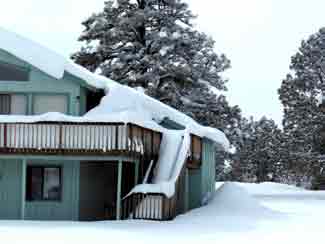
Neighbors are placing bets on when this deck will collapse from the snow shed.
roof? You definitely do not want it coming down right in front of your door, and you probably don’t want to shovel it off your deck.
I was on a ladder installing outside speakers on a fancy house in Aspen when the roof snow slid. It crashed through the skylight on the lower roof, destroying the bed inside. Fortunately, no one was home at the time, so there were no injuries. No matter how big or small the home, living in a snow-prone area demonstrates the need for thoughtfulness in roof design.
The Best Roof Design is the Simplest
The basic “shed roof” with enough angle, shedding snow to the back of a tiny home, is the best design for a heavy snow-load area. A shed roof is also the easiest to design and build. Framing should be with 2×6 lumber spaced at 12″.
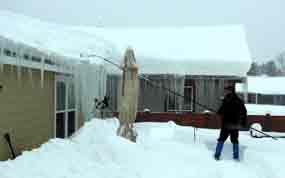
Roof rakes are lightweight. The handle extends to 21′. The rake is angled to grip the snow and pull it off while safely standing on the ground.
Roof Snow Removal is Imperative
Getting up on the roof to shovel snow has risks, but snow must be removed to prevent leaks or structural collapse. To avoid the dangerous climb, you might want to try a snow rake. If you start early in the season and clear your snow on a regular basis, you can keep your feet on terra firma while protecting your roof, your home, and your bones.
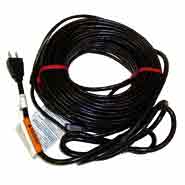
Heat-tape should also be used on north-facing slopes to prevent an ice dam from building up. Roof Heat-Tape comes in a roll with clips meant for a asphalt shingle roof. It need to be installed before winter. The heat tape is run in a zig-zag pattern along the roof’s edge, providing paths for melting snow to drain. A length should also be run through gutters and downspouts to keep them running freely as well. See the YouTube® video below on installation of roof heat-tape. Heat Trace Specialists has many ice melting specialty options and products.
Heat Tape on Metal Roofing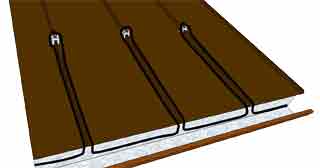
Heat tape is usually not used on a metal roof because the snow is supposed to slide off the roof. When the snow slides, it can take the heat tape with it. When circumstances necessitate using it anyway, it’s generally installed differently than it would be on a shingle roof. Instead of a zig-zag pattern, the heat tape is clipped in a “serpentine” pattern, close to the seams and ridges, keeping the roof cavity open.
Heat Trace Specialists has unique products for melting snow. Heated valleys and gutters can help problem areas. However, heating solutions require a lot of power.
Roof Rake that Won’t Damage Heat Tape
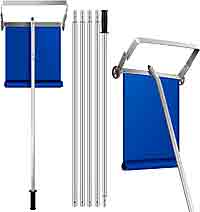
This snow roof rake can help clear the snow, wet leaves, and other debris from your roof; it can also prevent damage, thereby saving expensive repair costs. The thick aluminum cutting blade carves snow up like a hot knife to prevent the damage of ice dams.
The thick aluminum cutting blade features 3-inch wheels which elevate the head enough to protect shingle roofs and heat tape while removing snow.
Made of high-quality aluminum, VIVOHOME roof rake is lightweight for easy use and ultra-durable to provide service for many winters. It features a head cutter in size 17.7 x 9.5 inches that can scrape through even the toughest hard-packed snow and ice easily, which makes the process 2 to 3 times faster than using traditional snow rake. The maximum length of 20.8 ft allows you to stand on the ground and safely clear the snow accumulated on high roofs.
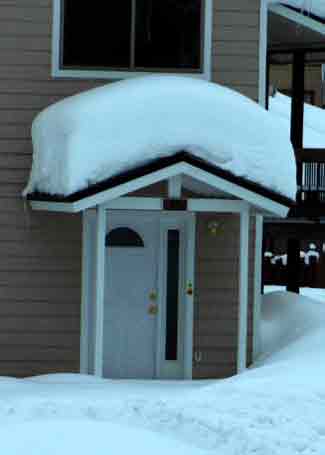
This attachment is protecting the front door but needs to be shoveled off soon.
Here is a statement from the LaPlata County Government Facebook® page on February 21, 2018:
“Snowy roof? Better move it! Depths are pushing structural limits for some buildings across the county. Building inspectors have been measuring snow accumulations to assess roof loads throughout the county. Every inch of snow on a roof near Durango’s elevation weighs 1.5 pounds per square foot; at 30-inch depth, the snow weighs 45 pounds per square foot – or 22.5 tons across a 1,000 square foot roof. At upper elevations, the snow is heavier – approximately 2.5 pounds per inch per square foot. This weight and accumulation on flat and low-pitched roofs is approaching, if not exceeding the design load capability of homes and buildings – even those newly constructed.Sagging roofs, creaking or moaning and visible cracks in walls are signs of unstable roof systems. Be aware that overloaded roof systems can collapse suddenly and without warning. Evacuate your home and call 911 if you suspect your roof is failing.”
Here is a YouTube® video about installing roof heat tape cables:
More pictures of snow load in Pagosa Springs, Febuary, 2019
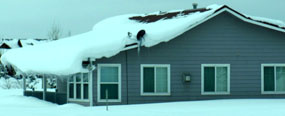
Roof extension over porch blocks snow shed because it’s not pitched enough.
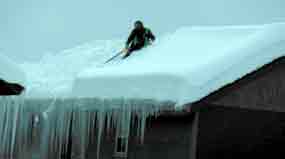
Getting up on the roof in winter is risky. But this snow removal expert is wearing a safety harness while removing the snow load.
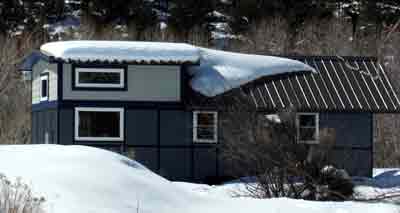
The multi-pitch roof and shallow angle over loft prevents snow load from shedding properly.
More cold weather considerations: Preventing freezing water pipes


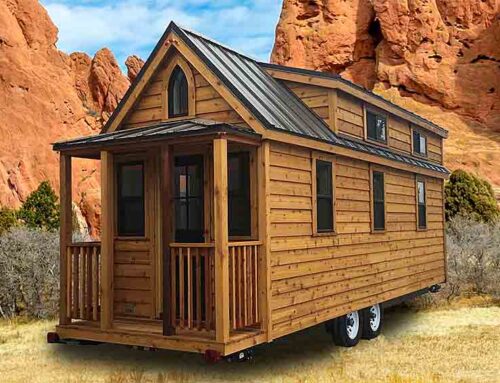
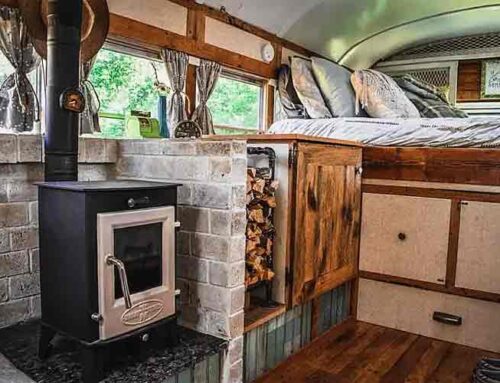
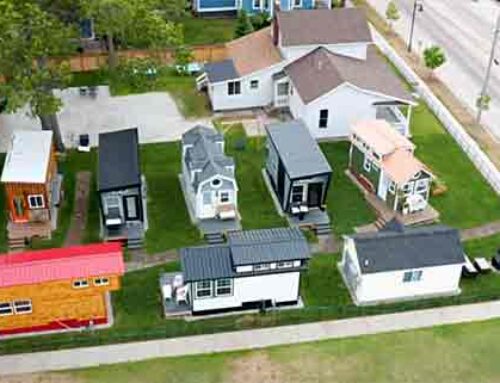
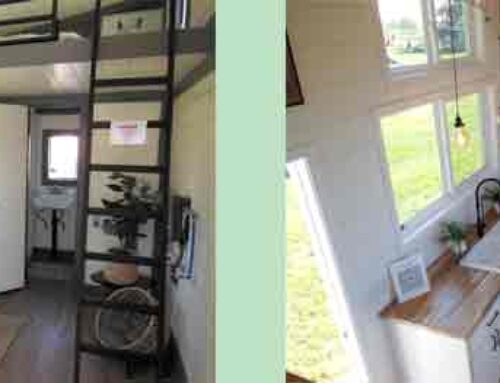
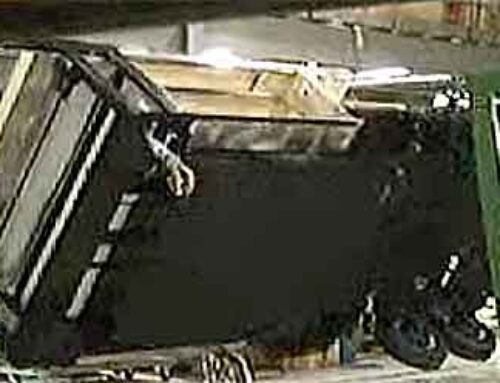
Leave A Comment